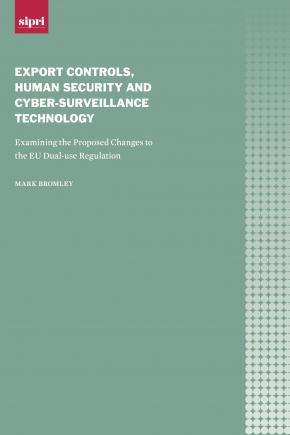Export Controls, Human Security and Cyber-surveillance Technology: Examining the Proposed Changes to the EU Dual-use Regulation
This paper seeks to inform discussion European Commission’s proposed ‘recast’ of the EU Dual-use Regulation—the main regulatory instrument for EU member states’ controls on the trade in dual-use items. The proposal, which is currently being examined by the European Parliament and Council of the European Union, is part of a review of the Regulation which was launched in 2011.
One of the most controversial aspects of the Commission’s proposal is a series of amendments to the Regulation that would give human rights, international humanitarian law (IHL) and terrorism a more central role in member states’ dual-use export controls and create an expanded set of controls on exports of so-called cyber-surveillance technology. Many of these aspects of the proposal have been broadly welcomed by the European Parliament and NGOs, which have been pushing for tighter EU controls on the trade in cyber-surveillance technology since 2011. However, other stakeholders—particularly the sections of EU industry affected by dual-export controls—have warned of the potential for confusion and unintended side-effects to be generated by the language used.
In particular, the paper outlines the existing relationship between human rights, international humanitarian law (IHL), terrorism and dual-use export controls, details the origins of the discussion about applying export controls to cyber-surveillance technology and describes the measures that have been adopted to date within the Wassenaar Arrangement and the EU. It then analyses those aspects of the Commission’s proposal which are focused on human rights, IHL, terrorism and cyber-surveillance technology while also detailing the responses and alternative formulations put forward by key stakeholders. The paper ends by presenting some conclusions and recommendations, focused particularly on the issues that should be addressed as the review process continues.
Executive summary
1. Introduction
2. Background to the current discussion
3. The Commission’s proposal and the responses made
4. Conclusions and recommendations

